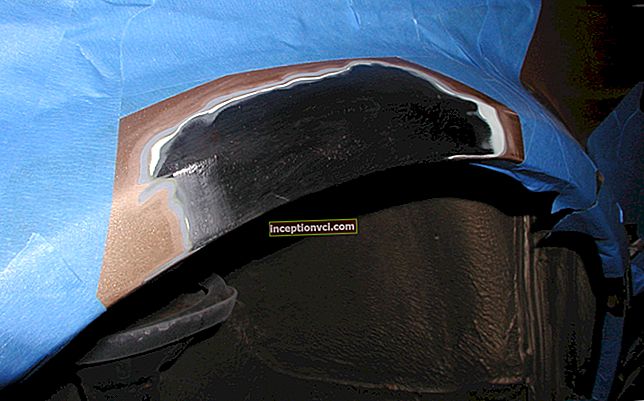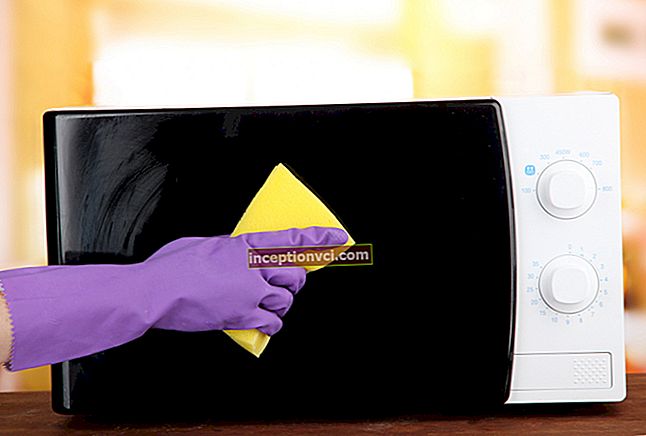This clothing does not get wet at all, protects from the wind, ideal in frost and heat. Is advertising lying to us? How does this miracle work and does it have any drawbacks?
The membrane is used in sewing sports and tourist clothing. The pioneer in the manufacture of membrane fabrics was W.L. Gore & Associates with its Gore-Tex. Now gloves, jackets, trousers, sports shoes are sewn from "gortex".
Advantages of things from a membrane:
- perfectly protect rain, wind and frost;
- lightweight and comfortable;
- good sweat removal.
By structure, fabrics are divided into:
- two-layer: the membrane is glued to the outer material. Warming lining is not attached to this fabric. Clothes made from a two-layer membrane are lighter, better wick away sweat and are relatively cheap;
- three-layer: outer layer, membrane and lining are glued together. This makes the thing durable, but at the same time this thing "breathes" worse;
- Z-Liner: the membrane fits freely between the outer material and the lining, which gives the advantage - reduces the number of seams in clothing.
By type, Gore-Tex membranes are subdivided into:
- Gore-Tex - the fabric that is used in most products;
- Gore-Tex Active - easily breathable fabric;
- Gore-Tex Pro - wear-resistant, for extreme sports.

Applications:

What do the Apollo 11 ship and a blazer have in common? Teflon. In 1969, it was used to insulate the wires of a ship landing on the lunar surface. In the 70s, W.L. Gore & Associates used Teflon film to create the first waterproof fabric.
Gore-Tex clothing
Clothing and gloves made of "Gortex" are optimal for:
- cycling and motorcycling;
- fishing and hunting;
- mountain skiing;
- hiking;
- running;
- mountaineering.
Company W.L. Gore & Associates created several modifications of "gortex" for sports equipment:
- Gore-Tex Pro Shell and Performance Shell... The membrane adheres to a durable outer fabric. Alternatively to the outer fabric and protective lining. These fabrics are considered to be durable and durable. Clothes made of three-layer fabric will provide excellent protection in the worst weather. Two-layer is more comfortable, but will last no less;
- Gore-Tex Active Shell - mesh lining is located in the protective layer of the membrane. It is a lightweight fabric with better water and vapor resistance;
- Gore-Tex Paclite... In the late 90s, a membrane was developed in which instead of a protective layer there was a solution. It is resistant to dirt, reinforces the membrane and does not require additional linings. This makes the fabric lighter, but less resistant to wear and tear;
- Gore-Tex Soft Shell Windstopper - fabric for windy weather. Made of materials with increased thermal insulation, such as fleece. Consists of two layers, between which the membrane is located. Good for humid climates.
The history of W.L. Gore dates back to 1958, when former DuPont chemist Bill Gore set up a laboratory in the basement of his home. Gore's main goal was to study Teflon and develop its practical applications. It was a family affair - Bill was helped by his wife Genevieve. In 1963, one of Gore's five children, Robert, joined the family business.
 Membrane fabrics are not only produced by W.L. Gore. There are other types of membranes on the market - Laytec, Sympatex, Triple Point Ceramic, Permia, Breathe, Drycoat, Windtex.
Membrane fabrics are not only produced by W.L. Gore. There are other types of membranes on the market - Laytec, Sympatex, Triple Point Ceramic, Permia, Breathe, Drycoat, Windtex. Membrane clothing not intended for wearing every day. The reasons are as follows:
- due to its properties, thermal underwear, fleece or Polartec items are worn with the membrane;
- high price;
- requires special care.
Of course, no one forbids wearing membrane jackets every day, but such things wear out faster, and they require special care.
Garment care of "gortex" fabric
What not to do with things made of membrane fabric:
- wash with powders. The powder clogs the micropores and the tissue loses its properties - the membrane ceases to wick away sweat.Likewise with bleaches and conditioners;
- chlorine-based detergents act exactly the opposite - they destroy the membrane, which reduces the water-repellent properties;
- make a soap solution, soak the thing;
- we stretch easily, trying not to wrinkle too much;
- rinse well, you cannot wring out. The soap must be completely removed. Alternatively, wash it in a washing machine at 30 ° C, in a delicate wash mode.
The invention of Teflon is credited to a scruffy assistant from DuPont. The company's chemist, Roy Plunkett, pumped gas into the tank. His assistant left the container in a cold warehouse. In the morning, the chemist discovered a white powder that did not stick to the sides of the container. It happened in 1938.
 Caring for clothes after washing:
Caring for clothes after washing:- drying clothes: straighten the item and dry it horizontally in a well-ventilated area;
- clothes made of membrane fabric cannot be ironed - heating will damage the structure;
- After the clothes are dry, treat them with impregnations that repel water. Choose membrane products. Usually, these are spray cans. The order is as follows:
- spray the liquid evenly over the outer surface;
- pause so that the liquid is absorbed and the surface is dry;
- repeat the procedure several times until the liquid ceases to be absorbed;
- leave for final drying.
Such processing will extend the service life and the thing will be less dirty.
Shoes with Gore-Tex membrane
Shoes are suitable for the following activities:
- running on the road and rough terrain;
- hiking;
- hunting;
- motor sports;
- everyday use.
Company W.L. Gore & Associates has developed several types of fabrics for shoes:
- Gore-Tex Insulated Comfort... Waterproof footwear for fall and winter. Thick lining keeps feet warm. Shoes do not get wet, moisture does not accumulate inside the shoe due to high permeability;
- Gore-Tex Extended Comfort... Suitable for both sports and everyday wear. Shoes of this class are water-resistant, have increased thermal conductivity - the feet will be comfortable even in the heat;
- Gore-Tex Performance Comfort... The best combination of comfort and protection. Suitable for active sports enthusiasts. Insulation keeps feet warm in cold weather and cool in hot weather.
Trekking shoe care
A few rules for shoe care:
- for cleaning, we recommend products specially designed for shoes with Gore-Tex fabric;
- boots with an outer leather covering are cleaned with a brush. And textiles - with a sponge;
- it is impossible to use products made of oil, fat or wax - they clog micropores, which reduces the "breathable" properties of shoes;
- treat shoes regularly with hydrophobic agents.
As with membrane clothing, footwear requires proper socks. Socks have been developed for shoes with a Gore-Tex membrane. Manufacturers mark them as "Recommended for Gore-Tex". These socks have flat seams, and the materials from which they are made wick moisture well to the membrane surface.
If you do not have the opportunity to purchase such socks, then you can wear others. However, it is not recommended to wear cotton socks. They absorb and retain moisture well.
Many sports and outdoor enthusiasts have chosen clothes and shoes with gortex fabric. Keep up.
Read: "Gore-Tex shoes: what are they and how to care for them?"










